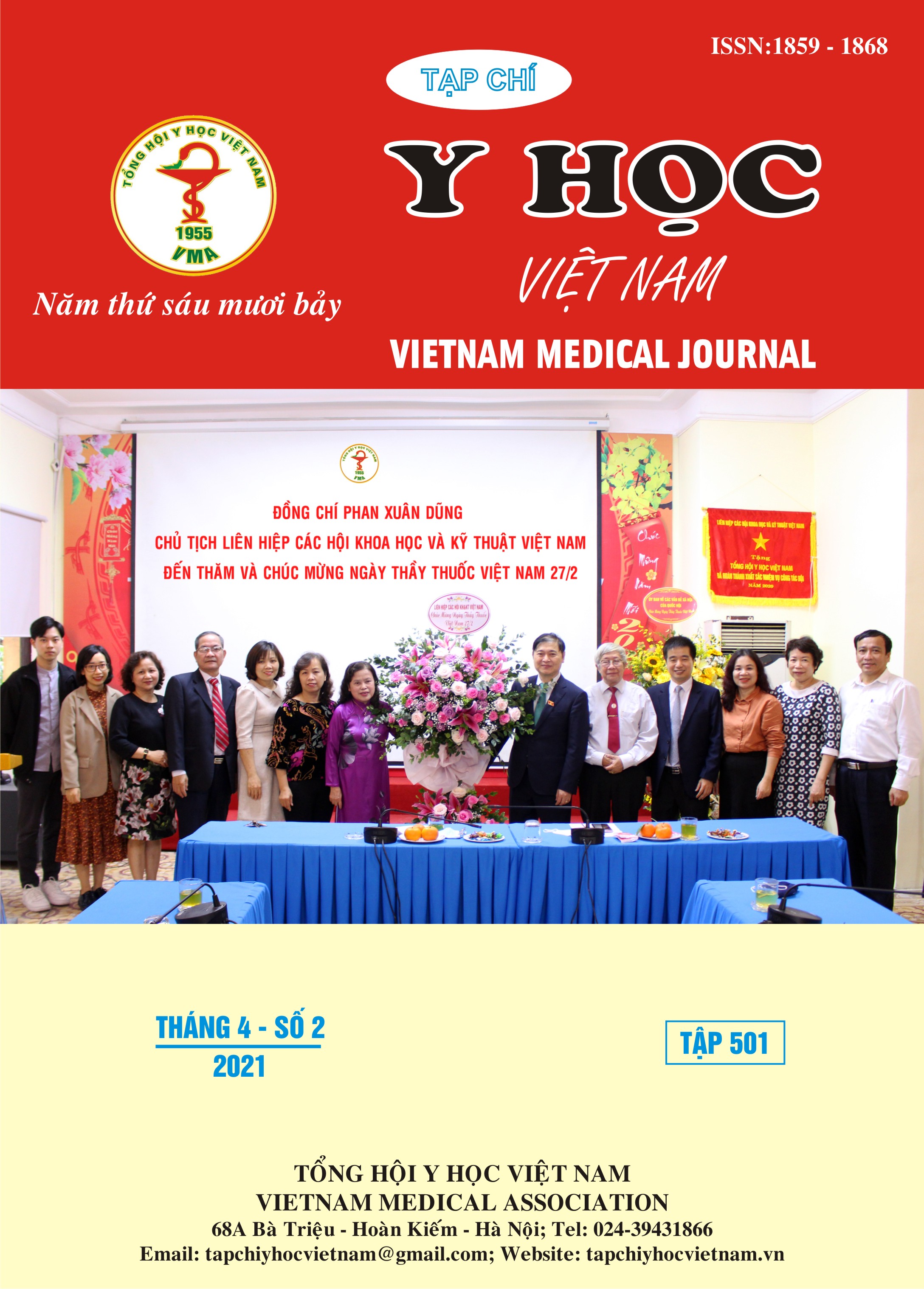CLINICAL AND PATHOGENIC MICROBIOLOGICAL CHARACTERISTICS ON THE HOSPITALISED PATIENTS WITH ACUTE EXACERBATION OF CHRONIC OBSTRUCTIVE PULMONARY DISEASE
Main Article Content
Abstract
Problems and goals: There are very few studies and in Vietnam there are no studies on the characteristics of pre-exacerbation management and treatment, phenotype and pathogenic microorganisms in patients with acute exacerbation of chronic obstructive pulmonary disease of non-ICU hospitalization. Research was conducted to identify practical gaps towards reducing exacerbations and increasing efficacy in treatment of COPD exacerbations. Patients and Methods: Descriptive, cross-sectional, longitudinal, multicenter studies performed on patients diagnosed with COPD acute exacerbations according to the study protocol, hospitalized for non-ICU treatment. Results nad discussions: 120 patients were analyzed. The majority of patients were managed, had pulmonary function measurements (73.3%) and followed-up for treatment (75.8%), but the majority still had pre-exacerbation moderate-severe dyspnea. The proportion of patients with frequent exacerbations and hospitalised exacerbations was high. Indication of treatment and follow-up of exacerbations in the emergency room to evaluate and decide hospitalization are unreasonable. There are differences between sites in antibiotic indications (especially the proportion of patients who did not receive an antibiotic and initially combined antibiotics), using long-acting bronchodilators, and inhaled CRS. 95% of treatment cases have good results with an average time of treatment in the hospital is 6.9 days, ranging from 2 to 35 days. Microbiological assay results combining culture and PCR showed that multiple microbial agents is dominant, in over 50% of cases there is a combination of virus with bacteria. The presence of S.pneumoniae, H.influenzae is the most. Presence of P.aeruginosa at a low rate. Under the action of treatment, using respiratory accessory muscles, SpO2 and CRP are markers of rapid improvement. There is a positive correlation between X-ray images suggesting emphysema and no increase in blood cells, between viral infection with bacterial co-infection, especially S.pneumoniae and between increased CRP ≥30mg / L and antibiotic exchange during treatment. Conclusion: There are still the gaps in COPD management and treatment to reduce exacerbations as well as manage COPD exacerbations in hospital.
Article Details
Keywords
Acute exacerbation of COPD, Lower respiratory tract infection, Microbial pathogens
References
2. Seemungal TA, Donaldson GC, Paul EA, et al. Effect of exacerbation on quality of life in patients with chronic obstructive pulmonary disease. Am J Respir Crit Care Med. 1998 May;157(5 Pt 1):1418-22. Doi: 10.1164/ajrccm.157.5.9709032. PMID: 9603117.
3. Aiyuan Zhou, Zijing Zhou, Yiyang Zhao et al. The recent advances of phenotypes in acute exacerbations of COPD. International Journal of COPD 2017:12 1009–1018
4. Celli BR, Barnes PJ. Exacerbations of chronic obstructive pulmonary disease. Eur Respir J. 2007;29(6):1224–38.
5. Crisafulli et al. Management of severe acute exacerbations of COPD: an updated narrative review. Multidisciplinary Respiratory Medicine (2018) 13:36


